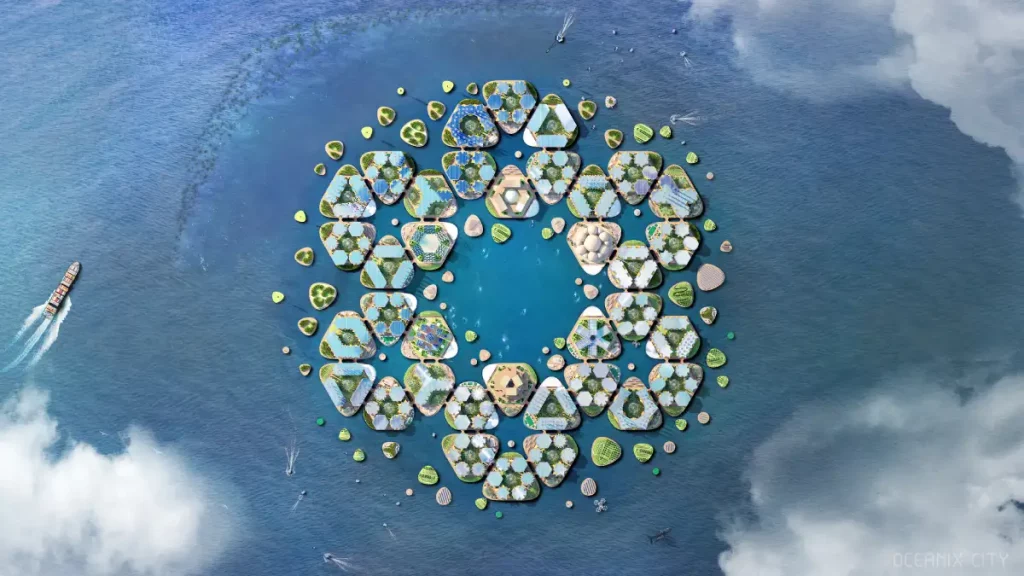South Korean city of Busan is partnering up with Oceanix and UN-Habitat to construct a floating city. Oceanix will be the project’s designer and the UN Human Settlement Program (UN-Habitat) will aid Oceanix in the fabrication of this project. Similar to several coastal cities, Busan is susceptible to surging sea levels.
Co-Founder of Oceanix, Itai Madamombe, stated to Business Insider that Bhutan was the aptest place for the firm to position its much-awaited prototype. However, this endeavour is hoped to be beneficial to all the coastal cities present around the globe and all the coastal communities who deal with the crisis of a rising sea level.
The flood-proof floating city is estimated to finish completion by 2025.
Oceanix’s Floating City in Busan
Oceanix’s floating city is precisely an assemblage of hexangular platforms suspended on the surface of the water.
Hexagons are the most commonly contemplated shape in most architectural designs. They permit builders to preserve both space and material.
The Oceanix City’s hexagonal platforms are to be reinforced by a limestone coating, which is two or three times stronger than concrete, better still buoyant. The material is fabricated by revealing subaquatic minerals to an electric current. Under the influence of that current, it becomes more solid as time passes, and repairs itself as the weather portrays itself to be harsher.
The aim is to fabricate a flood-proof city that escalates and the sea level rises. The city is also predicted to be available with an abundance of food, energy, and freshwater. Hutches beneath the platforms could be utilized to store scallops, kelp, or other forms of seafood. Aquaponic systems could be utilized to utilize the waste from the seafood to fertilize plants.
However, the design isn’t established in stone – and Oceanix hasn’t revealed the size of the floating city.
The expenditure is subject to change following the final blueprint of the design. At present, it is estimated to be a whopping USD 200 million.
